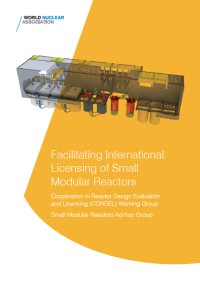CORDEL Facilitating International Licensing of Small Modular Reactors
The CORDEL Working Group established the Small Modular Reactor Ad-hoc Group (SMRAG) in 2013 to elaborate a path towards harmonized and well-regulated global SMR deployment. This group was directed to review the state of the art for this technology and its potential for standardization. Stemming from this review, this report looks at the various issues (positive and negative) that could arise in the licensing process for SMRs, applying the CORDEL concept of a standardized design approval process.
A major reference for SMRAG was the CORDEL report on Licensing and Project Development of New Nuclear Plants. This report explores the general relationship between licensing and regulatory systems on the one hand and important commercial project decisions on the other and brings to light some issues affecting new build. SMRs face many of the same issues that any new build project would face. These issues could relate, for example, to: different types of country (large or small, mature or emerging); differences in licensing process (one- or two-step); and types of reactor (‘first-of-a-kind’, ‘first-in-a-country’ or ‘nth–of-a-kind’).
Using the results of this report, the SMRAG has identified important factors concerning the overall approach needed to establish a more efficient and effective standardized methodology to license SMRs. This approach is based on a systematic look at the various requirements needed to obtain a construction and/or operating license.
This report starts by defining what an SMR is and what differentiates such designs from reactors currently being built and operated. Chapter 6 discusses the main concept of the report: what factors are associated with facilitating international licensing of SMRs. This chapter follows the standard licensing path from initial design concept to construction and operating license. Based on their size, design and construction, licensing SMRs presents unique challenges to the nuclear industry and regulators. The report argues that new approaches are required taking into account that SMRs will employ different fabrication techniques and will enjoy unique construction and operating features. The final part of the report concludes that the timing is right and there is a valid
way forward, if there is willingness amongst the relevant parties to accept a new licensing process for SMRs.
An appendix has been included in the report, providing suggestions for an adaptable licensing process using Finland as a case study.
